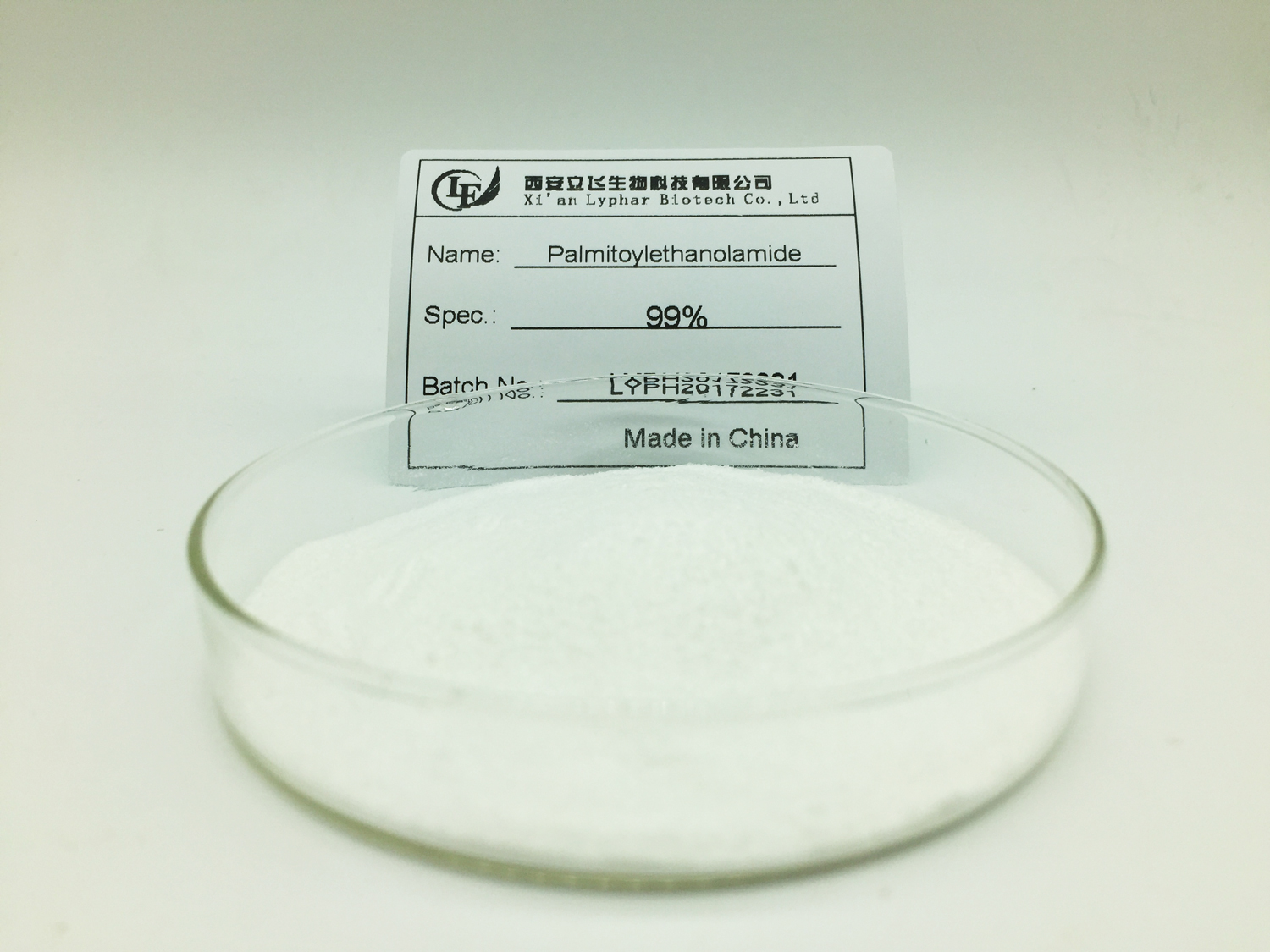Palmitoylethanolamide (PEA) is a naturally occurring lipid molecule that has gained attention for its potential therapeutic applications. It is part of the endocannabinoid system, which plays a role in regulating various physiological processes. Palmitoylethanolamide has been studied for its anti-inflammatory, analgesic, and neuroprotective properties, and it may have a range of applications, although it’s important to note that more research is needed to fully understand its effects.

Applications of Palmitoylethanolamide:
1.Pain Management: Palmitoylethanolamide has been investigated for its ability to alleviate both acute and chronic pain. It is believed to work by reducing inflammation and modulating pain receptors. Palmitoylethanolamide is sometimes used as an adjunct treatment for conditions like neuropathic pain, fibromyalgia, and chronic pain.
2.Anti-Inflammatory: Palmitoylethanolamide has anti-inflammatory properties and can help reduce inflammation in various conditions. It may be used to complement other anti-inflammatory treatments in cases of chronic inflammation, such as arthritis.
3.Neuroprotection: Research suggests that Palmitoylethanolamide may have neuroprotective effects, which could be relevant in the treatment of neurodegenerative diseases like Alzheimer’s and Parkinson’s disease. It may help protect neurons and reduce inflammation in the nervous system.
4.Mast Cell Stabilization: Palmitoylethanolamide has been studied for its ability to stabilize mast cells, which play a role in allergic and inflammatory reactions. This makes it potentially useful in the treatment of allergies and inflammatory conditions.
5.Endocannabinoid System Modulation: Palmitoylethanolamide interacts with the endocannabinoid system, although it doesn’t directly bind to cannabinoid receptors. It may help regulate the endocannabinoid system, which is involved in maintaining homeostasis in the body.
6.Glaucoma: Some studies have suggested that Palmitoylethanolamide may help in the management of glaucoma, a condition characterized by increased pressure in the eye. It may reduce inflammation and protect against damage to the optic nerve.

7.Dermatological Conditions: Palmitoylethanolamide has been explored for its potential in treating certain skin conditions, including eczema, atopic dermatitis, and psoriasis, due to its anti-inflammatory properties.
8.Irritable Bowel Syndrome (IBS): Palmitoylethanolamide has shown promise in animal studies for reducing inflammation and pain associated with IBS. It may be a potential treatment option for IBS in the future.
9.Pelvic Pain and Endometriosis: Palmitoylethanolamide may be used as part of a multi-modal approach to manage pelvic pain, including conditions like endometriosis.
It’s important to note that while there is a growing body of research supporting the potential benefits of Palmitoylethanolamide, more clinical studies are needed to establish its efficacy and safety in various medical conditions. If you’re considering using Palmitoylethanolamide for a specific condition, it’s essential to consult with a healthcare professional who can provide guidance based on your individual needs and circumstances. Additionally, the appropriate dosage and form of Palmitoylethanolamide can vary depending on the condition being treated.
